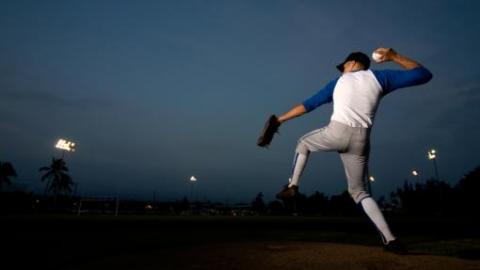
For a pitcher to avoid coal in his stocking, he must throw lots of strikes over lots of innings AND stay relatively healthy.
According to orthopedic surgeon Dr. James Andrews’ American Sports Medicine Institute (AMSI), the key to good health is limiting pitch counts and – when a career is in its infancy at the youth level – no breaking pitches. Listen further to the AMSI and you are not pitching at all at this time of year. Research published earlier this year at Ohio State in the American Journal of Sports Medicine should prompt idle pitchers, young and old, to get busy but without a ball. However, in so doing they will insure their ability to fire that ball this coming summer and beyond.
The quickest way to a man’s heart may be through his stomach but the quickest way to a pitcher’s arm staying healthy is via a similar route: through his core, specifically its muscles. At least, so say the Buckeye scientists who assessed the effect of pelvic control on the health of 347 professional baseball pitchers during the 2013 season. Pelvic control was determined during spring training by first asking the pitchers to raise one leg four inches off the ground. Then, the researchers measured how many degrees the pelvis tilted from horizontal.
Upon the conclusion of the season, the study’s authors looked at which of those pitchers became injured and how long they were sidelined. Ultimately, they determined those with “poor” pelvic control (> eight degrees of tilt) were more than twice as likely to miss 30 days than those with “good” control (< four degrees of tilt).
Furthermore, among the injured, those with “poor” control averaged 98.6 days on the sideline. Meanwhile, those with 4-8 degrees of tilt were out less than half that time (45.8 days) and those with “good” control were another two days better.
In short, a pitcher’s power cannot come from his arm alone. However, strengthening one’s legs in addition to the throwing arm is not sufficient. The core muscles of the abdomen must be strong, too, or power from the legs never gets translated to the arm.
Jump to the full version of this article in The Times. John Doherty is licensed athletic trainer and physical therapist. This column reflects solely his opinion. Reach him at jdoherty@comhs.org. Follow him on Twitter @JDohertyATCPT.
Posted by NATA News Managing Editor Jaimie Siegle (jaimies@nata.org). Photo via iStockphoto





